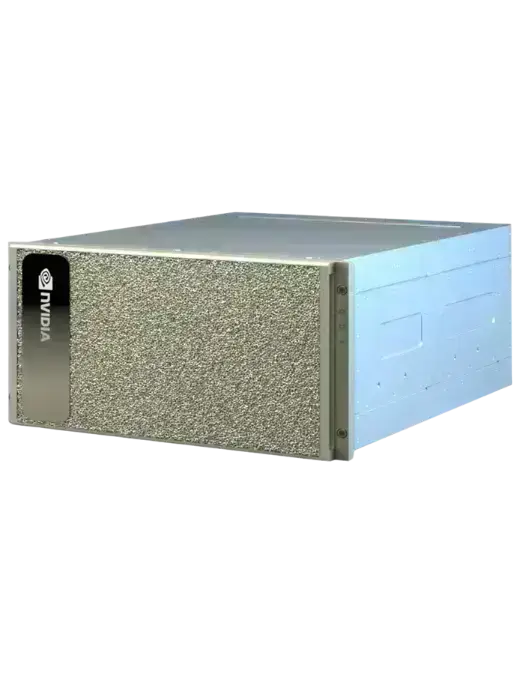In the rapidly evolving world of artificial intelligence, one of the biggest challenges isn’t just building models, it’s deploying them securely, at scale, and with data governance built-in. That’s why the recent collaboration between HPE and NVIDIA marks an important milestone for enterprise & government AI adoption
The Opportunity & the Roadblock
AI adoption is surging across sectors, from government to regulated industries to global enterprises. But the infrastructure side of the equation, data pipelines, privacy/security, governance, unified strategy, is still a major hurdle. According to HPE’s own “2025 Architecting an AI Advantage” report, nearly 60 % of organisations have fragmented AI goals & strategies, and a similar portion lack comprehensive data management for AI.
For technology and business-leaders in the Middle East and beyond, that fragmentation translates into slower time-to-value, higher risk, and missed opportunities.
What HPE & NVIDIA Are Doing
Together, HPE and NVIDIA are delivering a “secure AI factory” approach, pre-built, full-stack solutions designed for both government/sovereign entities and enterprises wanting to scale AI fast and safely. Key features include:
Turn-key “AI factory” solutions: HPE’s offering under its “NVIDIA AI Computing by HPE” portfolio is extended to simplify private AI infrastructure deployments for governments and regulated industries
Industry-leading hardware & performance: Their new generation of servers (e.g., HPE ProLiant DL380a Gen12 with NVIDIA RTX PRO 6000 Blackwell Server Edition GPUs) delivers up to 3× better price-to-performance for enterprise AI workloads.
Secure, sovereign-ready deployment: For high-assurance environments, the solution supports air-gapped management (isolated, secure networks) and full on-premises/hybrid cloud options, critical for government or highly-regulated organisations.
Unified data layer + governance: The HPE unified data layer (HPE Data Fabric + HPE Alletra Storage MP X10000) integrates structured, semi-structured and unstructured data, supports GPU-accelerated access, and promotes “data without borders” for AI pipelines.
Reference deployment for smart-cities: One live example is the township of Town of Vail, which is using the HPE Agentic Smart City Solution (powered by this infrastructure) to scale city-wide AI services, from compliance/permits to wildfire detection.

Why This Matters for Viperatech’s Audience
At Viperatech, we serve enterprise clients across the UAE and Middle East who are navigating digital transformation, AI readiness, data governance, and cloud/edge infrastructure. Here’s how this HPE/NVIDIA announcement resonates:
Faster time to market – Pre-validated infrastructure and turnkey models reduce deployment risk and accelerate time-to-value. For organisations in the region, this means less “pilot-itis” and faster move into production.
Compliance & sovereignty ready – With increasing local regulations around data residency, government cloud, and AI governance (especially in the UAE, Saudi Arabia, etc.), solutions that support air-gapped, on-prem/hybrid, and sovereign-ready architectures are a strong advantage.
Unified data strategy – Many regional enterprises are still operating with data silos (between departments, across geographies) and fragmented AI priorities. The unified data layer approach aligns nicely with efforts to centralise, govern and operationalise data for AI.
Scalable infrastructure for varied use-cases – Whether it’s smart city services, retail/personalisation, manufacturing IoT, or government service automation, this infrastructure supports a broad spectrum of AI workloads, something regional IT leaders will appreciate.
Partnership-led deployment – Instead of building everything from scratch, leveraging a vendor ecosystem (HPE + NVIDIA) can help organisations in the Middle East engage local system integrators and accelerate adoption, while tapping into global best-practices.
What to Consider (as You Adopt)
Define your AI strategy clearly – Before jumping into infrastructure, ensure your organisation has clarity on what ‘AI at scale’ means for you: the use-cases, the data pipelines, governance models, value metrics.
Data readiness is foundational – Hardware and GPUs are essential, but your data layer, access controls, governance and pipelines often determine success or failure. Solutions like HPE Data Fabric highlight this.
Hybrid/sovereign/cloud mix matters – For organisations in regulated industries or governments, a hybrid or on-prem model may be preferable. Choose platforms that support flexible deployment models (on-prem, cloud, air-gapped).
Operating model and skills – Infrastructure alone won’t deliver value. You’ll need data science, MLOps, governance, security and change management capabilities. Leverage vendor services or partnerships where needed.
Future-proofing – AI infrastructure will evolve rapidly (e.g., model sizes in trillions of parameters, specialised accelerators, new governance/ethics frameworks). Opt for platforms that can evolve (HPE’s roadmap with NVIDIA indicates this).
Conclusion
The HPE + NVIDIA collaboration marks a meaningful advancement toward operationalising AI in enterprise and government environments, with a strong emphasis on security, data governance, sovereign readiness and scalability. For organisations in the Middle East and beyond looking to move from pilot to production, this kind of full-stack, purpose-built infrastructure provides a compelling option.
At Viperatech, as we help our clients architect and deploy next-gen AI and data platforms, staying aligned with these types of innovations becomes critical. If your organisation is ready to explore how to build a secure, scalable AI foundation, whether on-premises, hybrid, or sovereign cloud, let’s talk about how you can align infrastructure, data and governance for long-term AI success.


























